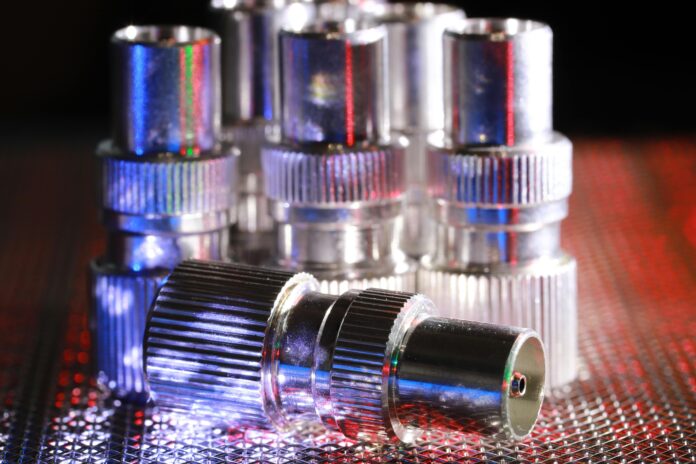If you have ever handled a CCTV camera, a test instrument, or even old broadcasting gear, chances are you’ve come across a small metallic connector that clicks perfectly into place — that’s the BNC connector. Despite being around for decades, BNC remains a popular choice in professional and industrial applications. This article will walk you through everything you need to know about BNC — from its origins to its modern uses.
What Does BNC Stand For?
BNC stands for Bayonet Neill–Concelman, named after its inventors Paul Neill and Carl Concelman. The term “bayonet” refers to the connector’s unique locking mechanism, where you twist and lock the plug into place. This simple design made it one of the most reliable coaxial connectors for transmitting signals.
A Brief History of BNC Connectors
The BNC connector was developed in the late 1940s as engineers sought an easy-to-use, secure, and compact coaxial connector for radio and electronic equipment. Its quick-connect bayonet style made it superior to screw-type connectors of the time. Even today, despite the rise of HDMI and digital connectors, BNC is still preferred for analog video and professional test setups.
How BNC Connectors Work
At its core, a BNC connector is designed to carry radio frequency (RF) signals. It maintains consistent impedance (usually 50 or 75 ohms) to prevent signal loss. The connector’s bayonet system ensures a solid mechanical connection, while the coaxial structure minimizes interference — essential for transmitting clean, high-quality signals.
Types of BNC Connectors
BNC connectors come in several forms, mainly based on impedance and usage:
-
50 Ohm BNC: Commonly used for data and RF applications.
-
75 Ohm BNC: Used in video and broadcast systems.
-
Reverse Polarity BNC (RP-BNC): Modified pin configuration used in specific communication devices.
-
Mini BNC: A compact version for tight spaces, such as routers or switches.
Applications of BNC in Different Fields
BNC connectors are found in many industries due to their durability and reliability. They are commonly used in:
-
Broadcasting: For video signals and synchronization.
-
Security Systems: Connecting CCTV cameras and DVRs.
-
Test Equipment: Oscilloscopes and frequency analyzers.
-
Networking and Data Transmission: Early Ethernet and lab setups.
-
Military and Aviation: Where durability is key.
BNC in CCTV and Security Systems
BNC connectors are almost synonymous with analog CCTV systems. They offer quick installation and secure connections that can handle video signals without distortion. I personally remember helping a friend install a four-camera system for his shop — every connection was done using BNC cables. Despite the rise of IP cameras, analog setups with BNC still dominate smaller security installations due to their affordability and reliability.
BNC in Broadcasting and Audio Equipment
Before HDMI and SDI became standard, broadcasters relied heavily on BNC connectors to transmit video between devices. Even today, you’ll find professional studios using BNC cables for SDI (Serial Digital Interface) connections because they’re robust and can handle high-bandwidth signals with minimal interference.
BNC vs RCA, F-Type, and SMA Connectors
While BNC and RCA connectors look somewhat similar, they serve different purposes. RCA is used mainly for audio and consumer-grade video, whereas BNC is built for professional applications where precision and durability matter. The F-type connector, on the other hand, is common in television and satellite systems, while SMA connectors handle higher frequencies used in wireless communication.
How to Connect and Install a BNC Cable
Installing a BNC connector is simple once you know the basics. You strip the coaxial cable, insert it into the connector, and twist to lock. Crimp and twist versions exist depending on the application. Always ensure a clean cut and tight fit — any loose connection can cause interference or video loss.
Modern Relevance of BNC in a Digital Age
You might think BNC is outdated in the era of fiber optics and HDMI, but it continues to play a key role in labs, test equipment, and SDI video systems. Its analog reliability and rugged design keep it relevant even in modern digital setups.
Common Problems and Troubleshooting
Typical issues include loose connections, signal noise, or broken pins. Cleaning the connectors regularly and ensuring they’re properly seated often fixes the problem. For long-term setups, investing in high-quality cables with gold-plated connectors can help prevent corrosion.
How to Choose the Right BNC Connector
When selecting a BNC connector, consider:
-
The impedance (50 vs 75 ohm)
-
The cable type (RG59, RG6, etc.)
-
The environment (indoor vs outdoor)
-
The quality of materials (nickel vs gold-plated)
Choosing the right match ensures consistent signal quality and long-lasting performance.
Conclusion
The BNC connector may be old-school, but it’s far from obsolete. From laboratories to security systems, it remains a symbol of reliability and engineering simplicity. Whether you’re a technician, a broadcaster, or just a DIY enthusiast, understanding how BNC connectors work can save you both time and frustration.
FAQs
1. What does BNC stand for?
Bayonet Neill–Concelman, named after its inventors.
2. Is BNC still used today?
Yes, especially in CCTV, SDI broadcasting, and test equipment.
3. Can I use a BNC to HDMI adapter?
Yes, with a converter box that converts analog signals to digital.
4. Are BNC cables analog or digital?
Traditionally analog, but SDI (digital) systems also use BNC connectors.
5. What is the difference between 50 and 75 Ohm BNC?
50 Ohm is for data/RF, while 75 Ohm is for video/broadcast.
SEO Title:
BNC Connectors Explained: Meaning, Types, and Everyday Uses
Meta Description:
Discover everything about BNC connectors — their history, types, uses, and installation. Learn how BNC remains relevant in modern electronics, CCTV, and broadcasting.


